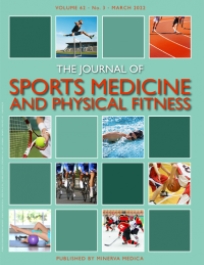Ferioli D1 2, Bosio A2, Carlomagno D2, Azzolini M2, La Torre A1, Rampinini E2
1, Università degli Studi di Milano, Milan, Italy; 2, Mapei Sport Research Center, Olgiate Olona, Italy

Introduction Quantification of training load (TL) is essential for monitoring an effective training process. To date few studies have analyzed different methods to determine TL in basketball (Manzi et al., 2010; Scanlan et al., 2014) and no studies verified the relationships between TL and changes in players’ fitness level. Furthermore, there is limited information regarding the TL sustained by players of different competitive levels. The aim of this study was to quantify the perceived TL in professional and semi-professional basketball players and to determine its relationship with changes in physical fitness during the preparation period. Methods Thirty-two professional (n=14, age: 25.6±6.0 yrs, height: 198±10 cm, weight: 95.5±13.0 kg) and semi-professional (n=18, age: 23.3±4.7 yrs, height: 190±9 cm, weight: 82.2±11.6 kg) basketball players participated in the study. Players performed Yo-Yo intermittent recovery level 1 (YIR1) and counter-movement jump (CMJ) tests before and after the preparation period. In addition, physiological responses to a standardized 6-min continuous running (Mognoni’s test) and to a standardized 5-min high-intensity intermittent running test (HIT) were measured. The players’ perceived TL was assessed using the session rate of perceived exertion method. All data were analyzed using magnitude-based inferences. Results Almost certain differences were found for weekly TL and training volume (TV) between professional and semi-professional players (TL: 5241±1787 vs 2408±487 AU, effect size (ES)=1.49±0.46; TV: 914±122 vs 634±71 min, ES=2.17±0.49). Very likely moderate relationships were observed between TL and changes in La– (r=-0.48±0.23) and H+ (r=-0.42±0.25) measured after HIT. Very likely moderate relationships were also found between TV and changes in absolute (r=-0.39±0.25) and relative (r=-0.41±0.25) peak power produced during CMJ. No clear relationship was found between TL or TV and changes in YIR1 and Mognoni’s test. Discussion The present results suggest that a low TL in basketball entails a small physiological adaptation to submaximal intermittent running but not to submaximal continuous running or maximal intermittent performance (YIR1). Conversely, high TV can negatively affect CMJ performance during the preparation period. Future studies should investigate the effect of TL on changes in physical fitness during the competitive season. References Manzi V, D’Ottavio S, Impellizzeri F, Chaouachi A, Chamari K, Castagna C. (2010). J Strenght Cond Res, 24(5),1399-1406. Scanlan A, Wen N, Tucker P, Borges N, Dalbo V. (2014).
Int J Sports Physiol Perform, 9(5),851-856. DOI:10.23736/S0022-4707.20.10109-9